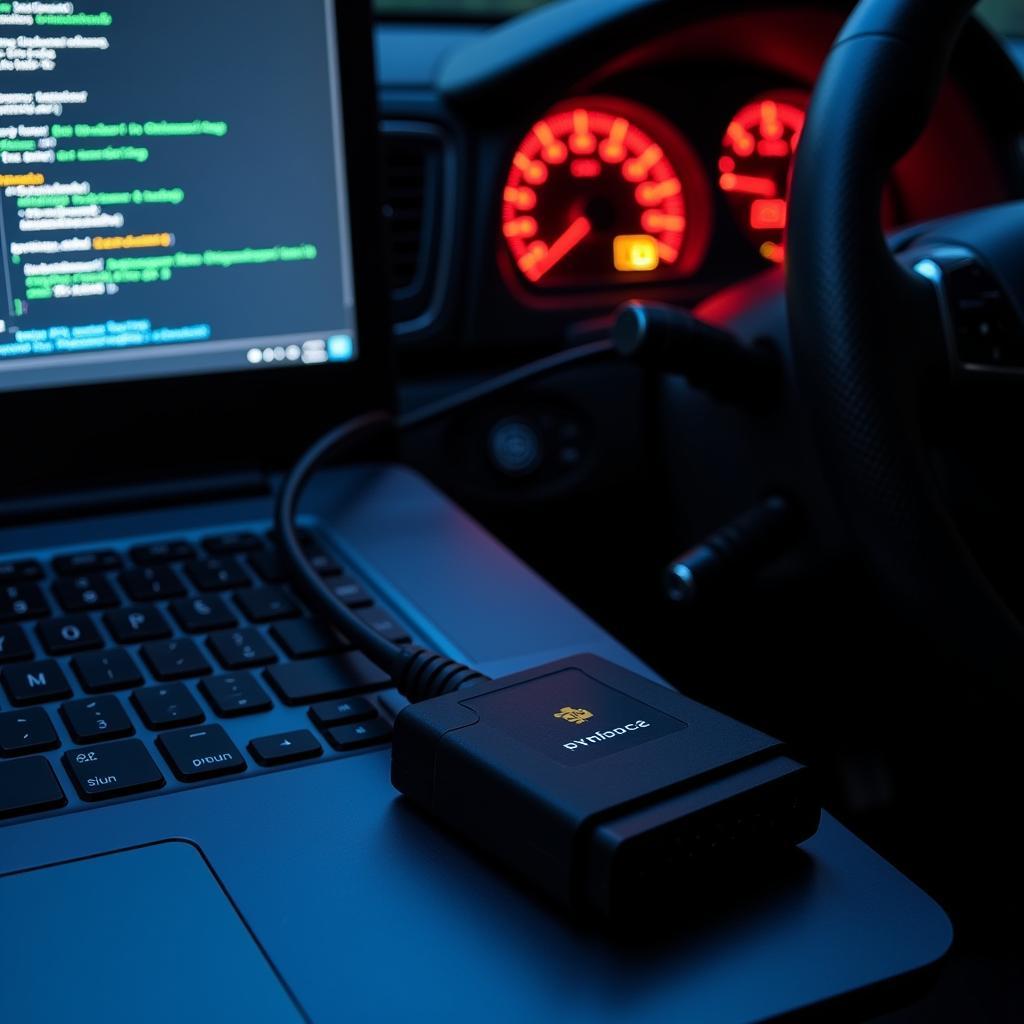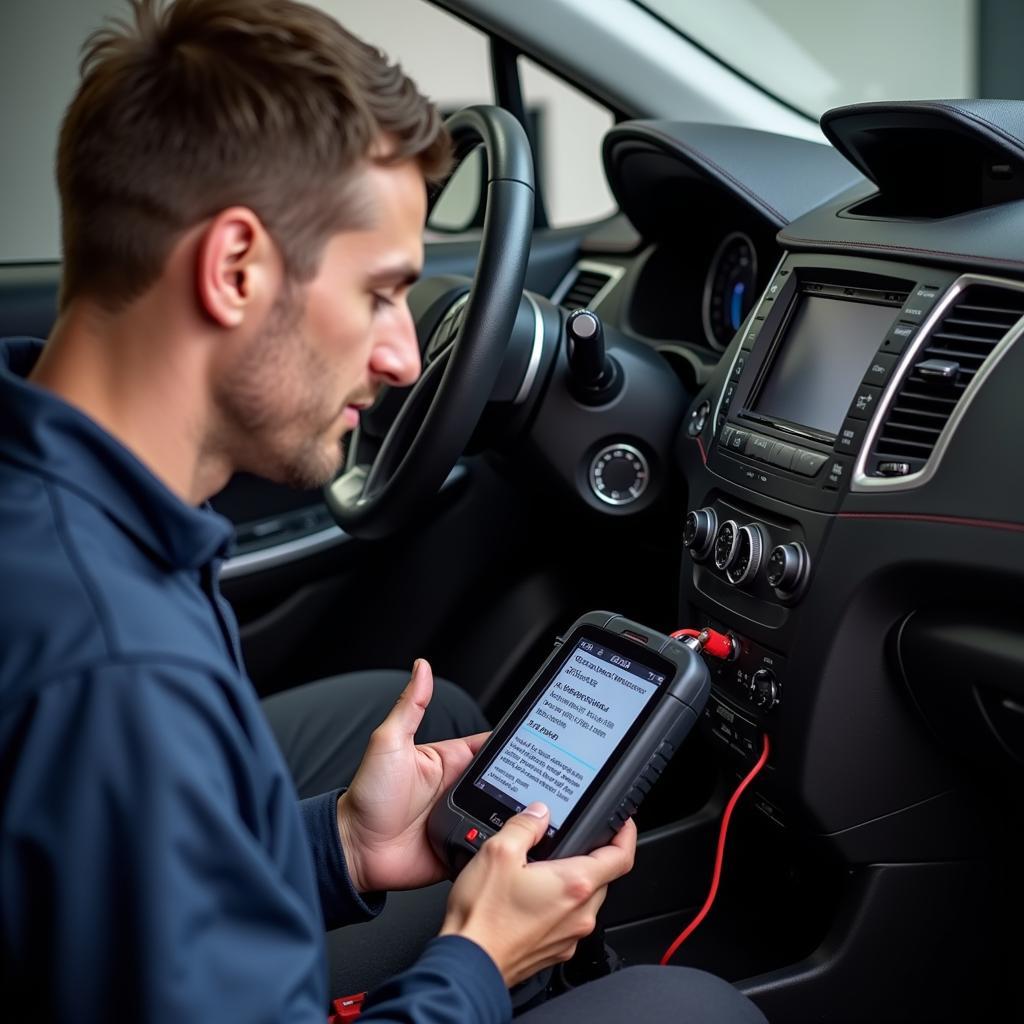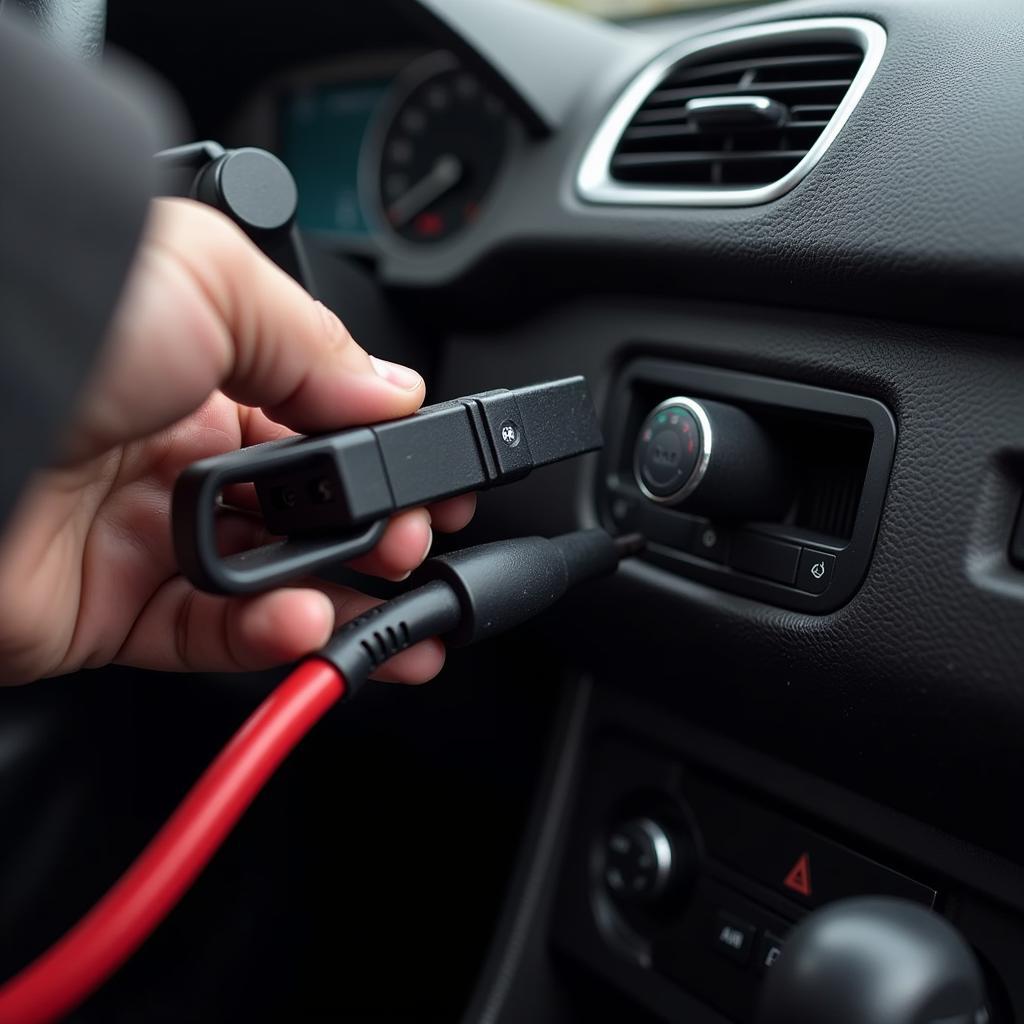The automotive world is rapidly evolving, with sophisticated electronics and software playing a crucial role in vehicle performance. For mechanics, this means embracing new tools and techniques to diagnose and repair issues effectively. Enter the “Python Diagnostic Tool,” a game-changer in the industry. While not a physical tool in itself, Python represents a powerful programming language that’s driving innovation in automotive diagnostics.
Let’s break down why Python is becoming essential for modern mechanics and how it can be leveraged to tackle increasingly complex vehicle systems.
Why Python for Automotive Diagnostics?
Python’s simple syntax and versatility make it ideal for interfacing with vehicle systems. It’s like having a universal translator for your car’s computer. Here’s why more mechanics are turning to Python:
- Open-Source Powerhouse: Python and its extensive libraries are freely available, eliminating costly software licensing fees. This accessibility makes it a cost-effective choice for both independent mechanics and large repair shops.
- OBD-II Communication: Python excels in communicating with a vehicle’s On-Board Diagnostics (OBD-II) port, the gateway to accessing a treasure trove of real-time data. This data can pinpoint issues, often before they escalate into major problems.
- Custom Tool Development: Python empowers mechanics to go beyond generic scan tools. They can create tailored diagnostic scripts and applications specific to certain car makes, models, or even individual vehicle issues.
- Data Analysis and Visualization: The sheer volume of data generated by modern vehicles can be overwhelming. Python’s data analysis libraries come to the rescue, enabling mechanics to visualize sensor readings, identify trends, and make informed repair decisions.
 Python Code on an OBD-II Scanner Screen
Python Code on an OBD-II Scanner Screen
Putting Python into Action: Real-World Applications
The beauty of Python lies in its practicality. Let’s explore some tangible ways it’s revolutionizing automotive diagnostics:
- Reading and Clearing Diagnostic Trouble Codes (DTCs): Python scripts can quickly retrieve and interpret DTCs from a vehicle’s ECU (Electronic Control Unit), providing valuable insights into the nature and location of faults.
- Live Sensor Data Monitoring: Imagine tracking engine RPM, coolant temperature, or oxygen sensor readings in real-time. Python makes this possible, allowing mechanics to observe vehicle behavior under various driving conditions.
- Actuator Testing and Control: From fuel injectors to ABS modules, Python can be used to test the functionality of various actuators, ensuring they respond correctly to commands from the vehicle’s computer.
- Firmware Updates and Programming: In an era of software-defined vehicles, Python is becoming increasingly important for performing firmware updates and even reprogramming certain vehicle modules.
“Python’s ability to interact directly with a vehicle’s ECU gives mechanics an unprecedented level of control and insight,” says John Miller, a veteran automotive engineer and Python enthusiast. “It’s like having X-ray vision into the inner workings of a car.”
 Mechanic Using Python-Based Diagnostic Software on Tablet
Mechanic Using Python-Based Diagnostic Software on Tablet
Getting Started with Python for Automotive Diagnostics
Ready to explore the world of Python-powered diagnostics? Here’s a starting point:
- Learn the Basics: Familiarize yourself with Python fundamentals. Numerous online resources and courses cater to beginners.
- Explore OBD-II Libraries: Python libraries like “python-OBD” provide the tools to communicate with a vehicle’s OBD-II port.
- Experiment with Sample Code: Start with simple scripts to read DTCs or monitor sensor data. This hands-on experience builds confidence.
- Join the Community: Online forums and communities dedicated to automotive Python are invaluable for sharing knowledge and seeking guidance.
The Future of Diagnostics is Here
Python isn’t just a passing trend; it’s the foundation upon which the future of automotive diagnostics is being built. As vehicles become more complex, the ability to understand and work with software will be paramount for mechanics.
ubuntu drive diagnostic tools can be particularly helpful when used in conjunction with Python. By embracing Python, mechanics are equipping themselves with a powerful and versatile toolset to meet the challenges of the evolving automotive landscape.
Frequently Asked Questions (FAQs)
1. Do I need to be a programming expert to use Python for diagnostics?
Not at all! Python’s beginner-friendly syntax makes it accessible even if you have limited programming experience.
2. Is Python compatible with all car makes and models?
While the core OBD-II standard is universal, specific diagnostic commands and data structures can vary between manufacturers.
3. Can Python be used for more than just diagnostics?
Absolutely! Python’s applications extend beyond diagnostics, including data logging, performance tuning, and even autonomous vehicle development.
4. What are some recommended resources for learning Python for automotive diagnostics?
Online platforms like Coursera, Udemy, and even YouTube offer excellent courses and tutorials.
5. Where can I find support if I encounter issues with my Python scripts?
The Python community is vast and helpful. Online forums and dedicated automotive Python communities are excellent places to seek assistance.
For additional assistance in navigating the world of automotive diagnostics and finding the right tools for your needs, contact ScanToolUS at +1 (641) 206-8880 or visit our office located at 1615 S Laramie Ave, Cicero, IL 60804, USA.
linux built in diagnostic tools can also provide a solid foundation for working with Python and other advanced diagnostic solutions.




Pingback: The Trends in Electronic Diagnostic Tools Development - Car Scan Tool